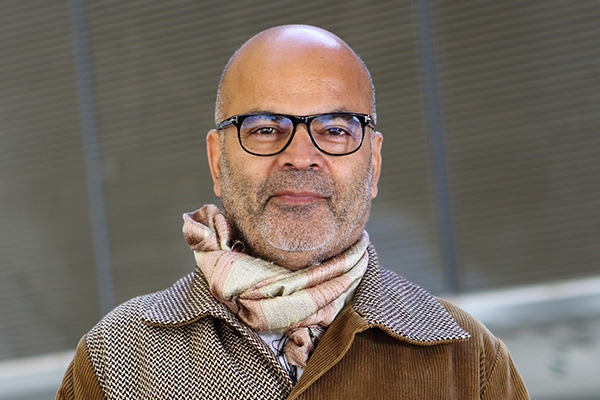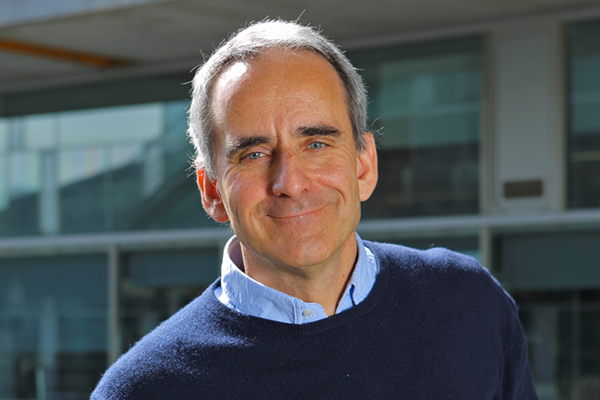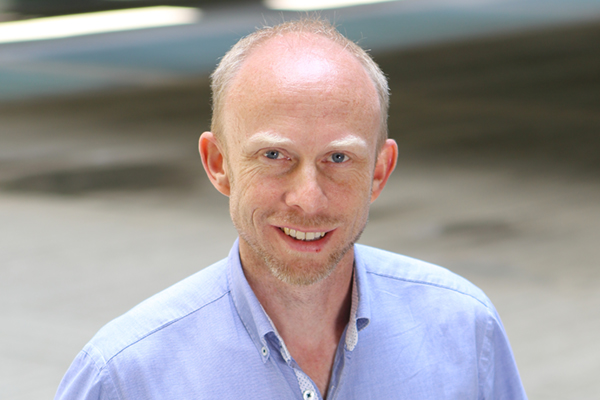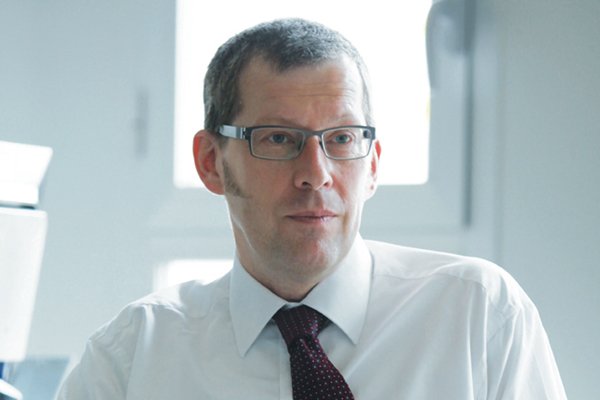
Bioinformatics and Genomics Programme
COORDINATOR: RODERIC GUIGÓ
The overarching goal of research groups of the Bioinformatics and Genomics Program is the understanding of the encoding of biological information in the sequence of the genomes (that is, the complex relationship between genomes and phenotypes), and how evolutionary forces have contributed to shape this encoding. The groups are interested in understanding the sequence patterns that instruct the molecular pathway leading from the DNA to protein sequence, and the mechanisms by which the outputs of this pathway (RNA and proteins) interact to confer functionality at the molecular and cellular levels. Research also includes the development of basic alignment methodologies tailored to functional genomic domains exhibiting specific patterns of sequence conservation, and investigation of how the evolution of these domains is correlated with the evolution of the encoded phenotypic traits. We are also interested in uncovering the very basic molecular events that govern the evolutionary processes. Last, the program aims to translate the understanding of the human genome sequence into knowledge about diseases.
The scientific highlights of the program during 2015 include the development of methods for the systematic analysis and evolutionary profiling of Long Non Coding RNAs in non-model organisms, the finding that the whole genome duplication in yeast was caused by inter-specific hybridization, the characterization of the patterns of transcriptional variation across individuals and tissues in humans, the delineation of the complex evolutionary history of Selenophosphate Synthetases, and the finding that developmentally regulated genes are transcribed in the absence of canonically activating histone modifications. The program has continued to deploy and support the European Genotype Phenotype Archive (EGA), in collaboration with the European Bioinformatics Institute (EMBL-EBI).

Cell and Developmental Biology
COORDINATOR: VIVEK MALHOTRA
The mission of the scientists in the Cell and Developmental Biology department is to reveal the mechanisms of cell compartmentation, division and tissue organisation. The department is staffed by Vivek Malhotra (mechanism of protein secretion), Isabelle Vernos (microtubule and spindle dynamics), Manuel Mendoza (cytokinesis, chromosomal segregation, and cell cycle check points), Pedro Carvalho (organelle biogenesis and homeostasis), Jerome Solon (tissue organisation), and Sebastian Maurer (cytoplasmic RNA localisation). Vivek Malhotra, Manuel Mendoza and Pedro Carvalho are funded by grants from the European Research Council (ERC). Pedro Carvalho is also a recipient of the international early career scientist award from HHMI and in 2013 was elected EMBO Young Investigator. Isabelle Vernos is a member of the Scientific Council of the ERC and is also a member of the Advisory Council for Science, Technology and Innovation of the Spanish Secretariat for Research, Development and Innovation.
The department published a number of highly important papers in 2015. But the publication of Jerome Solon and colleagues merits special attention (Salas et al, Dev. Cell 2015). These authors showed that during development in drosophila, more specifically in stages leading to dorsal closure, a group of cells decreases its volume following the activation of apoptosis to generate contractile forces that drive epithelial closure. Because the decrease in cell volume is a hallmark of apoptosis, such a force generation mechanism is likely to be active in processes undergoing massive apoptosis such as brain or limb development or wound healing. These findings make for a conceptual advancement, and suggest a need to reveal full three-dimensional analysis of the process and not focus purely on the classically-performed description of apical surface remodelling.

Gene Regulation, Stems Cells and Cancer
COORDINATOR: JUAN VALCÁRCEL
Scientific highlights of groups in the program during 2015 include several important publications on chromatin structure, mechanisms of transcription, epigenetic modifications during cell differentiation and reprogramming, and networks of post-transcriptional gene regulation.
Work in Pia Cosma’s group in collaboration with the group of Melike Lakadamyali (Institute of Photonic Sciences – ICFO) used super-resolution fluorescence microscopy to reveal that nucleosomes, the units of DNA packaging in eukaryotic cells, are distributed in clutches rather than closely packed in the classical textbook “chromatin fibres”. Furthermore, the density of the clutches correlates with the differentiation status of cells, indicative of regulatory mechanisms and functional relevance. In recognition for this piece of work, Pia received the 2015 Barcelona City Prize.
Work in Susana de la Luna’s group revealed a novel function for the Dyrk1A kinase, an important protein encoded by a gene located in a region of Chromosome 21 linked to Down Syndrome. The new data revealed that Dyrk1A is part of transcriptional complexes, associates with a specific subset of promoters and is involved in phosphorylation of the Carboxy-Terminal-Domain (CTD) of RNA polymerase II, a modification important for transcription activation and elongation. These findings open a new perspective to consider the targets and effects of Dyrk1A and other kinases in both normal cell function and in disease.
The long-standing efforts of Luciano Di Croce’s lab to understand the function of one of the key transcription repressor complexes, Polycomb, produced unexpected results in 2015. They found that the Mel18 subunit of the complex engages in interactions with distinct sets of other proteins and, as a consequence, deploys transcriptional regulation programs that include both repression and activation of genes relevant for differentiation of stem cells into cardiac cells. These results reveal the dual activities of the Polycomb complex and its implication in mesoderm lineage differentiation, of relevance for future developments in heart regeneration.
Collaborative work between the groups of Thomas Graf and Miguel Beato revealed that the transcription factor C/EBP, which can promote trans-differentiation of B cells into macrophages, does so by activating both pre-existing and de novo transcriptional enhancers important for macrophage differentiation. These results are of relevance because they provide clues about the hierarchy and kinetics of gene activation required for swapping between cell fates as well as ways to short-cut these decisions.
The Valcárcel group carried out the first genome-wide screen for alternative splicing regulators of an endogenous gene (the Fas/CD95 receptor) in mammalian cells. The results revealed connections between the splicing process and transcription, signalling pathways and other cellular processes, including iron homeostasis. Systematic analysis of the effects of depleting each component of the spliceosome allowed the reconstruction of the network of their functional relationships. This revealed that splicing regulation can occur at essentially every step of the complex process of spliceosome assembly and also offered a new tool to explore mechanisms of post-transcriptional gene regulation. These approaches will be expanded through collaboration with the CNAG-CRG and the support of a European Research Council grant.

Systems Biology
COORDINATOR: JAMES SHARPE
The research groups in the Systems Biology program cover a wide range of topics: from dynamic gene regulatory networks to systems neuroscience, and employ a wide range of model systems to address these issues, including prokaryotes, cell lines, C. elegans, Drosophila and mice. Underlying this diversity, however, are the common goals of combining systematic and quantitative data collection, using computational models, going beyond molecular descriptions and arriving at a deeper dynamic understanding of complex biological processes. To achieve these goals the program is strongly interdisciplinary, comprising a high proportion of physicists, mathematicians and computer scientists, in addition to biologists. In this way the program tackles topics such as: signal transduction, gene regulatory networks, multicellular patterning, chemotaxis, systems neuroscience, the evolution of networks, and the impact of stochastic noise at the whole organism level.
The program pursued various activities during 2015, including the 5th edition of the popular Systems Biology Summer School in June - again teaching the basics of dynamical modeling to a group of 22 internationally-selected young researchers. This year also saw the departure of one of our Junior Group Leaders – Johannes Jaeger. After 7 years in the program combining experimental work with computational modeling, to understand the detailed dynamics of molecular patterning in the early Drosophila embryo, Yogi left the CRG in September to take up his new position as director of the Konrad Lorenz Institute (KLI), in Klosterneuburg, Austria. We wish him well in this new adventure!
Scientific highlights of the year covered a variety of topics. The group of Matthieu Louis revealed how neurons in the Drosophila larva extract information about external odor gradients to guide chemotaxis, while Mara Dierssen’s group showed that the drug epigallocatechin-3-gallate (EGCG), when used in combination with environmental enrichment, could reduce symptoms in a mouse model of Down syndrome. Luis Serrano’s team provided further insights into gene regulation and virulence in the bug Mycoplasma pneumonia, while the lab of Ben Lehner discovered that the differential rates of variation across the human genome are due to differences in DNA repair rates rather than differential mutation rates, and the group of Manu Irimia revealed the influences that alternative splicing can have on development and evolution. And finally, the first successful attempt at reverse-engineering the structure of a gene regulatory circuit on a growing domain was achieved by the group of James Sharpe.

CNAG-CRG
DIRECTOR: IVO GUT
The year 2015 has been another productive and successful one for the CNAG-CRG, which has also undergone major changes. The administrative move to join the CRG will provide stability, and formidable opportunities to strike synergies and strengthen our research ties. Internally, we have broadened our areas of research with the incorporation of the Population Genomics team led by Oscar Lao and, with the arrival of Holger Heyn, our Single Cell Genomics team has gained a new leader.
The CNAG-CRG has consolidated its role as a high-quality collaborator in many aspects. Several of our large-scale international projects, the EU-funded project Blueprint of the International Human Epigenome Consortium and the International Cancer Genome Consortium project are nearing their conclusion and we have been instrumental in generating the high quality data necessary for the remarkable findings of the Spanish CLL-ICGC project that have been received with great acclaim by the international research community. We have taken a leading role in the ICGC publication in Nature Communications that summarizes the effort of 83 researchers from 78 institutions to create reliable standards to obtain accurate results in the detection of somatic mutations, which are a hallmark of cancer genomes.
In preparation for large-scale clinical and population-based projects we have increased our computing infrastructure to 3,500 computer cores which provide 200 TFlops, and 7.6 petabytes of data storage. There is capacity enough to hold all of the sequencing data produced at CRG-CNAG and it is used by our bioinformaticians to deliver high quality results. At the same time, we have been working hard on the quality, performance, efficiency, and integration of our processes and computing. We have further developed our quality system for the entire process from sample reception, to laboratory and data analysis.
In 2015, we started B-CAST, a large-scale EU-funded project, to characterize the tumours of 10,000 breast cancer patients. This multi-year project will generate a unique opportunity to relate background genetic profiles and cancer-specific somatic mutations with treatment outcomes.